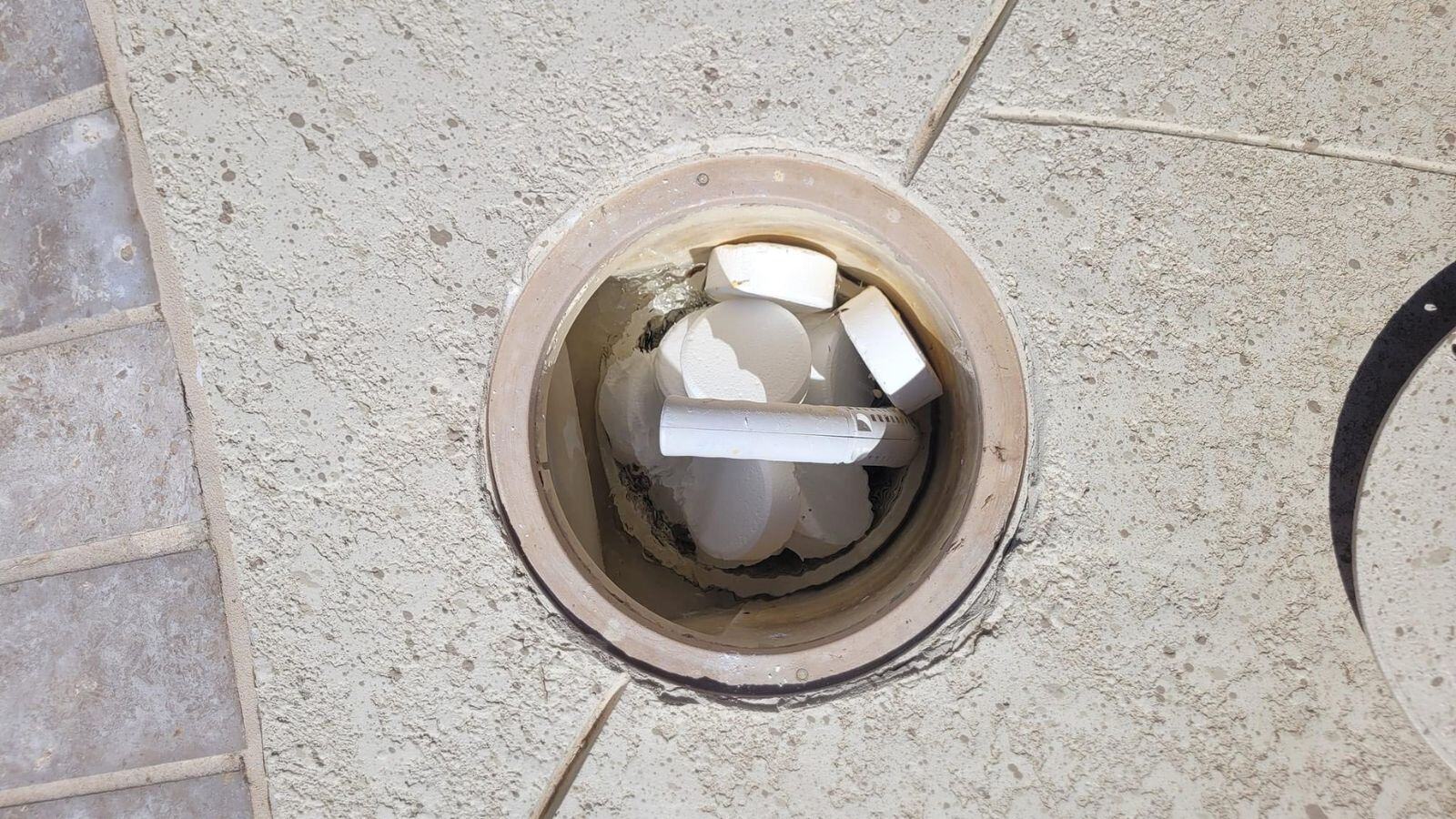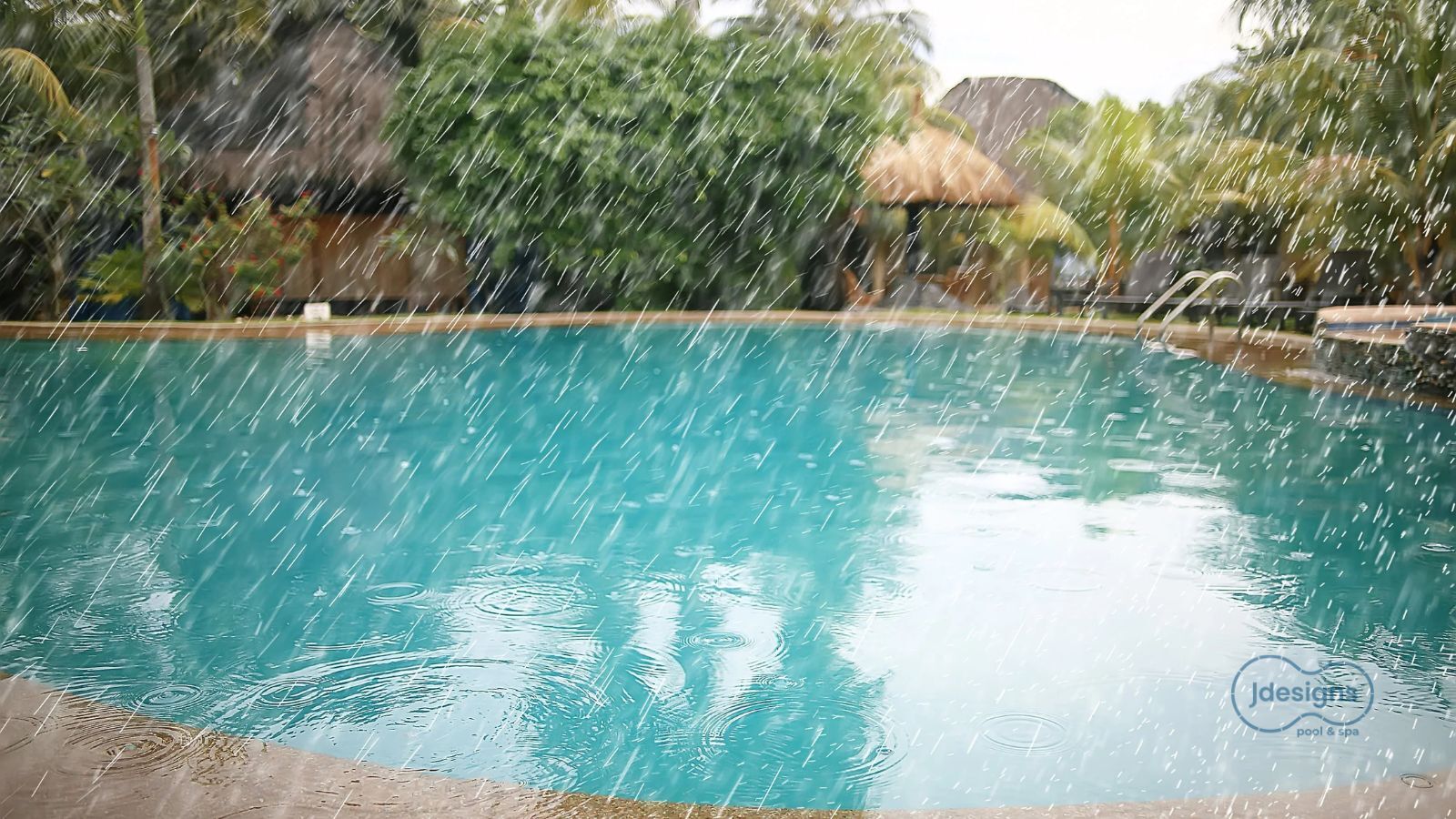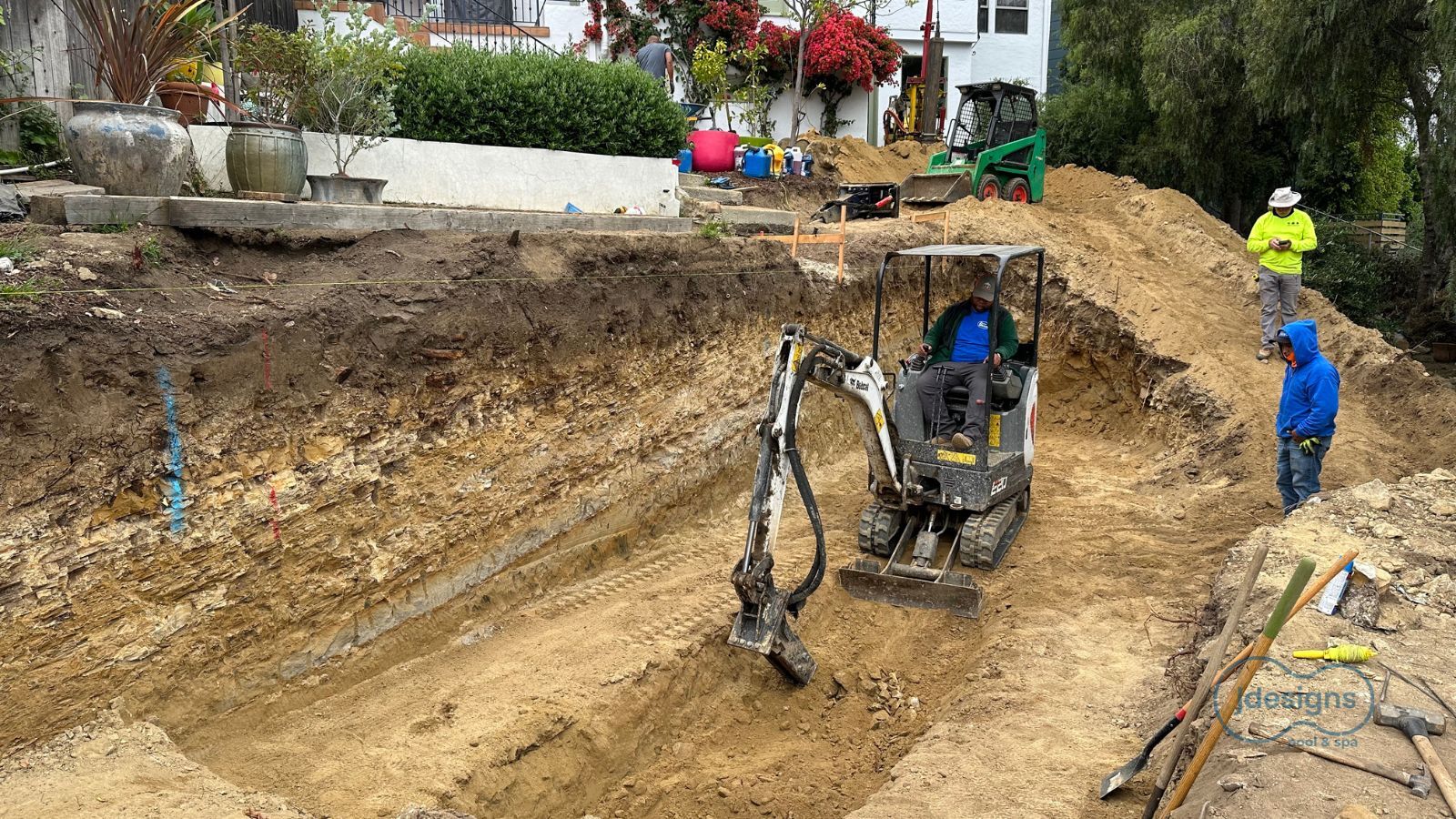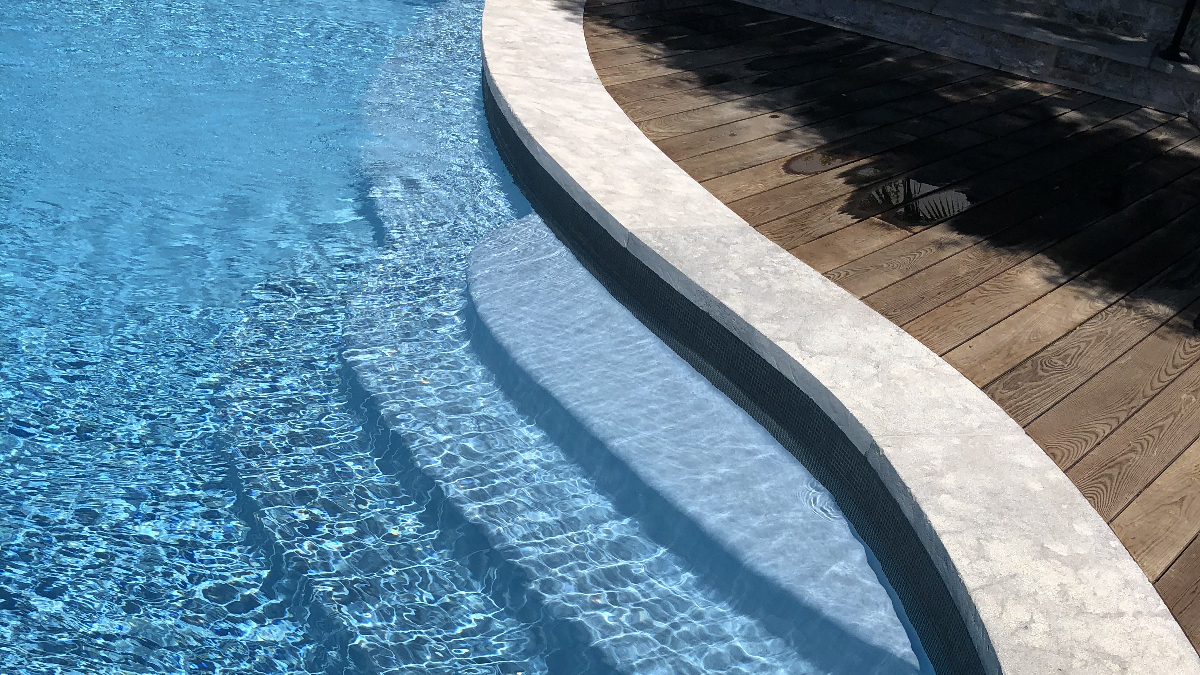Is Your Pool Ready for the Next Storm? How to Prevent the pool to Overflow
Pool Overflows After Heavy Rain and How to Lower Your Pool's Water Level

Have you ever dropped chlorine tablets into your skimmer, thinking it's a safe, effective shortcut?
Did you know this common habit could cost you thousands of dollars in equipment damage?
In this article, we’ll break down why this method is so harmful, how it affects your pool’s delicate balance, and safer alternatives that protect your investment and water quality.

At first glance, dropping chlorine tablets into the skimmer might seem logical—it keeps things tidy and out of the way. But the skimmer is not a neutral zone. The high chlorine concentration dissolves rapidly when water flows through it, sending unstable chemical surges into your system. Then, when your pump shuts off, the leftover tablets sit in stagnant water, creating an acidic, corrosive environment.
This chemical stew quietly damages:-1.jpg?width=206&height=275&name=Tablets%20Vertical%20Blog%20Visual%20(1)-1.jpg)
Pump internals
PVC plumbing and seals
Rubber gaskets
Plastic lids and housing
Over time, this leads to cracks, warping, and costly repairs.
Even when water isn’t flowing, chemicals remain active—and dangerous.
A crucial detail most pool owners overlook is that residual tablet chemicals inside your plumbing don’t just vanish when the pump stops. They settle and concentrate in the still water inside your pipes, filter, and especially your heater.
Your heater’s most vulnerable part?
Its metal heat exchanger coil—usually made from copper or brass—is exposed directly to high concentrations of acidic residue.
Here’s what happens:
Acidic water begins breaking down the metal
Pitting and corrosion form over time
Eventually, pinhole leaks develop, and your heater fails
This damage isn’t just possible—it’s inevitable with repeated use of skimmer tablets.

Somewhat safer than adding to the skimmers. Simple and widely available, these float on the surface and slowly release chlorine. However, they can settle in one place, damaging that spot’s surface finish.
.jpg?width=214&height=285&name=Tablets%20Vertical%20Blog%20Visual%20(4).jpg)
These systems are plumbed into your return line, distributing chlorine after the pump and filter. This prevents acidic concentrations from reaching delicate components, such as pumps, heaters, and filters.
Yes, some initial plumbing work is involved, but the long-term protection is well worth it.
.jpg?width=220&height=294&name=Tablets%20Vertical%20Blog%20Visual%20(1).jpg)
Most chlorine tablets contain Trichlor (Trichloro-s-triazinetrione), a highly concentrated chemical (usually 99%). Some store brands may have less (around 53.5%), but they often include additional additives—such as Cyanuric Acid (CYA).
CYA helps protect chlorine from UV degradation, but excessive amounts build up quickly, disrupting your water chemistry. This causes:
Surface discoloration
Cement finish erosion
Reduced sanitizer effectiveness
At J Designs, we routinely test CYA levels and help clients avoid costly water drains or finish repairs.
Smart pool care goes beyond chlorination:
Test and balance your pH, alkalinity, and calcium hardness weekly
Inspect plumbing and equipment monthly
Avoid shortcuts—especially those involving chemicals
You’re now aware that using a Skimmer tablet is dangerous and costly, but you know how to fix it. If you've experienced cloudy water or unexpected equipment failures, it's time to switch to more innovative chlorination methods.
.jpg?width=206&height=275&name=Tablets%20Vertical%20Blog%20Visual%20(2).jpg) Owning a pool is a substantial investment, and its longevity is contingent upon meticulous maintenance that extends beyond chlorination. Regular assessment of pH levels, alkalinity, and calcium hardness is crucial to prevent the corrosive effects of imbalanced water. Keeping these parameters within their recommended ranges protects your equipment and enhances the comfort and safety of swimmers.
Owning a pool is a substantial investment, and its longevity is contingent upon meticulous maintenance that extends beyond chlorination. Regular assessment of pH levels, alkalinity, and calcium hardness is crucial to prevent the corrosive effects of imbalanced water. Keeping these parameters within their recommended ranges protects your equipment and enhances the comfort and safety of swimmers.
Additionally, routine cleaning and inspection of the pool's physical structure and filtration system are essential. Debris should be removed promptly, and filters must be cleaned or replaced as needed to ensure optimal performance. By taking a holistic approach to pool care, you protect your financial investment and preserve the serene beauty and inviting allure of your aquatic retreat.
Let J Designs help you explore advanced options, such as ozone-based sanitation, which delivers cleaner water without damaging your pool. We offer sanitation alternatives that will not compromise the water quality and the pool's components. This article on ozone alternatives to sanitation can help you decide on the best sanitation solutions for your project.

Pool Overflows After Heavy Rain and How to Lower Your Pool's Water Level

The Hidden Soil Risks That Can Destroy Your Pool and Budget Why a Proper Soils Exploration Is Critical Before Building a Pool: A homeowner’s guide to...

Why Pool Coping Fails - How to Avoid Expensive Repairs If you’re planning a new pool or renovating an older one, it’s completely normal to feel...